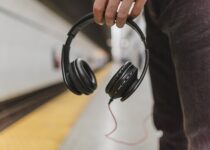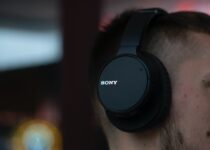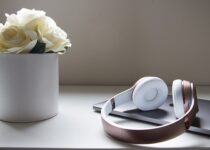Do Noise Cancelling Headphones Cause Headaches?
Noise cancelling headphones are becoming increasingly popular in our modern world, with many people using them to block out unwanted sounds and create a more peaceful listening experience.
However, there are some concerns about the potential side effects of using these headphones, particularly with regards to headaches.

Some individuals have reported experiencing headaches after prolonged use of noise cancelling headphones, leading to questions about whether these headphones are safe and what causes the headaches.
In this article, we will explore the potential link between noise cancelling headphones and headaches, including the science behind how these headphones work, the possible reasons for headaches, and what steps can be taken to prevent or alleviate any discomfort.
Do Noise Cancelling Headphones Cause Headaches?
There is some evidence to suggest that prolonged use of noise cancelling headphones may cause headaches in some individuals.
This is due to a variety of factors, including the pressure that these headphones can place on the ears and the effect that blocking out all ambient noise can have on the brain.
Noise cancelling headphones work by using small microphones to pick up the ambient sounds around you and then generating a sound wave that is equal in amplitude but opposite in phase to cancel out the unwanted noise.
This means that when you wear noise cancelling headphones, you are effectively creating a vacuum of silence in your ears.
While this can be a great way to reduce stress and create a more peaceful listening environment, it can also lead to headaches in some people.
This is because the pressure created by the headphones can cause a feeling of tightness or discomfort around the head and ears. Additionally, blocking out all ambient noise can put extra strain on the brain as it tries to process the lack of sound.
It’s worth noting that not everyone who uses noise cancelling headphones will experience headaches, and the severity of any discomfort can vary greatly from person to person.
However, if you are someone who is prone to headaches or migraines, it may be worth using these headphones in moderation and taking regular breaks to give your ears and brain a rest.
To minimize the risk of headaches, it’s also important to choose a pair of noise cancelling headphones that fit comfortably and have adjustable pressure settings.
You can also try reducing the volume or taking short breaks from using the headphones throughout the day. By taking these steps, you can enjoy the benefits of noise cancelling headphones without the risk of any unwanted side effects.
Here if your headphones are quite.
Why Does My Head Hurt With Noise Cancelling?
There are several reasons why noise cancelling headphones can cause headaches or discomfort for some people. One possible reason is the pressure that these headphones can place on the ears.
Noise cancelling headphones work by creating a vacuum of silence in the ears, which can sometimes lead to a feeling of tightness or discomfort around the head and ears.
This pressure can be especially noticeable if the headphones are worn for an extended period of time, as the pressure accumulates.
Another potential cause of headaches when using noise cancelling headphones is related to the way the brain processes sound.
When you wear noise cancelling headphones, all ambient noise is blocked out, which can put extra strain on the brain as it tries to process the lack of sound. This strain can lead to tension headaches or migraines in some people.
In addition to these factors, there are other variables that can contribute to headaches when using noise cancelling headphones, such as the volume at which the headphones are set, the type of noise being cancelled, and the individual’s sensitivity to sound.
If you experience headaches or discomfort when using noise cancelling headphones, there are several things you can do to minimize the risk of discomfort.
For example, you can try taking regular breaks from using the headphones, adjusting the pressure settings to reduce discomfort, or using a lower volume.
You can also consider trying different types of noise cancelling headphones to find a pair that fits more comfortably and minimizes any pressure on the ears.
Additionally, it’s always a good idea to talk to a healthcare professional if you experience persistent headaches or other discomfort, as they can help determine the underlying cause and recommend appropriate treatment.
Noise-canceling headphones use a mechanism called active noise cancellation (ANC) to reduce or eliminate external sounds. ANC works by creating sound waves that are opposite in phase to the external sounds, which cancels out the noise.
Here’s how it works:
- Microphones on the headphones pick up the external sounds around you, such as traffic, airplane noise, or people talking.
- The headphones then create an “anti-sound” wave that is 180 degrees out of phase with the external sound wave. When the two waves meet, they cancel each other out.
- The anti-sound wave is played back through the headphones, mixed in with the music or audio you’re listening to.
- The result is that the external noise is significantly reduced or eliminated, and you can enjoy your music or audio without interruption.
There are two types of active noise cancellation: feedforward and feedback.
- Feedforward ANC uses microphones on the outside of the headphones to pick up external sounds and create an anti-sound wave that is played back through the headphones. This type of ANC is more effective at canceling out higher-frequency sounds, such as traffic or airplane noise.
- Feedback ANC uses microphones inside the earcups to pick up sound waves that bounce around inside the headphones. This type of ANC is more effective at canceling out lower-frequency sounds, such as the hum of an air conditioning unit.
In addition to active noise cancellation, some headphones also have passive noise isolation.
This means that the headphones physically block out external sounds by creating a seal around your ears, preventing sound from getting in. The combination of passive noise isolation and active noise cancellation can provide even better noise reduction.
The Tight Headphone Band
Yes, a tight headphone band can cause headaches, particularly if you wear the headphones for extended periods of time.
When the band is too tight, it can put pressure on your scalp, temples, and forehead, which can lead to tension headaches or even migraines.
To prevent headaches caused by a tight headphone band, here are a few tips:
- Adjust the band: If your headphones have an adjustable band, try loosening it to a more comfortable setting. This can help relieve pressure on your head and reduce the risk of headaches.
- Choose a different style: Some headphone styles, such as over-ear or on-ear headphones, can put more pressure on your head than others. If you’re prone to headaches, consider trying a different style of headphones that distributes pressure more evenly across your head.
- Take breaks: If you’re wearing headphones for an extended period of time, take breaks every hour or so to give your head a rest. Remove the headphones and gently massage your scalp to relieve any tension.
By following these tips, you can help prevent headaches caused by a tight headphone band and enjoy your music or audio without discomfort.
The Headphones’ High Volume
Yes, high volume levels on noise-canceling headphones can cause headaches, especially when used for an extended period of time.
When you listen to music or other audio at high volumes, the sound waves can overstimulate the hair cells in your inner ear, leading to hearing damage and discomfort.
Additionally, the overstimulation of the hair cells can lead to tension in the muscles of the head and neck, which can contribute to headaches.
To prevent headaches caused by high volume levels on noise-canceling headphones, consider the following tips:
- Use a lower volume level: Keep the volume at a comfortable level, even if you’re in a noisy environment. This will help prevent overstimulation of the hair cells in your inner ear.
- Take breaks: If you’re using noise-canceling headphones for an extended period of time, take breaks every hour or so to give your ears and head a rest. This can help prevent tension headaches.
- Choose noise-canceling headphones with volume limiting features: Some noise-canceling headphones have features that limit the maximum volume level, which can help prevent overstimulation of the hair cells in your inner ear.
By following these tips, you can help prevent headaches caused by high volume levels on noise-canceling headphones and enjoy your music or audio without discomfort or risk of hearing damage.
Wearing noise-canceling headphones all day can have some potential negative effects, including discomfort, headaches, and even hearing damage. Here are some things to consider:
- Discomfort: Wearing headphones for an extended period of time can cause discomfort and pressure on the ears and head, especially if the headphones are too tight or not properly adjusted. This can lead to headaches and other forms of discomfort.
- Hearing damage: Wearing headphones at high volume levels for an extended period of time can damage the hair cells in the inner ear, which can lead to hearing loss. This is especially true if you listen to music or audio at high volumes in noisy environments.
- Social isolation: Wearing noise-canceling headphones all day can make it difficult to interact with others or be aware of your surroundings, which can lead to social isolation and a lack of awareness of potential dangers.
To prevent these negative effects, here are some tips:
- Take breaks: If you’re wearing noise-canceling headphones for an extended period of time, take breaks every hour or so to give your ears and head a rest. This can help prevent discomfort and headaches.
- Use a lower volume level: Keep the volume at a comfortable level, even if you’re in a noisy environment. This will help prevent overstimulation of the hair cells in your inner ear.
- Use noise-canceling headphones in moderation: While noise-canceling headphones can be great for reducing external noise, it’s important to use them in moderation and be aware of your surroundings. Consider using them for shorter periods of time or in quieter environments.
By following these tips, you can help prevent the negative effects of wearing noise-canceling headphones all day and enjoy your music or audio without discomfort or risk of hearing damage.
Does Noise-Cancelling Hurt Your Ears?
Noise-canceling headphones do not usually hurt your ears, but they can cause discomfort or pain if they are not used correctly or for extended periods of time. Here are some potential factors that can lead to discomfort:
- Tight fit: If noise-canceling headphones are too tight or not properly adjusted, they can put pressure on the ears and lead to discomfort or pain. It’s important to adjust the headphones to a comfortable and secure fit.
- High volume: If noise-canceling headphones are used at high volume levels, they can overstimulate the hair cells in the inner ear and lead to hearing damage. This can cause discomfort or pain in the ears.
- Extended use: If noise-canceling headphones are worn for extended periods of time, they can lead to discomfort or pain in the ears due to the pressure and contact with the headphones.
To prevent discomfort and pain when using noise-canceling headphones, here are some tips:
- Adjust the headphones for a comfortable fit: Ensure that the headphones are adjusted to a comfortable and secure fit on your head and ears.
- Use a lower volume level: Keep the volume at a comfortable level to prevent overstimulation of the hair cells in the inner ear.
- Take breaks: If you’re using noise-canceling headphones for an extended period of time, take breaks every hour or so to give your ears and head a rest.
By following these tips, you can help prevent discomfort and pain when using noise-canceling headphones and enjoy your music or audio without any issues.
Noise-Cancelling Headphones Can Cause Pressure Pain
Yes, noise-canceling headphones can cause pressure pain, especially if they are too tight or if they are used for an extended period of time. The pressure that the headphones put on the ears and the surrounding areas can cause discomfort and pain.
The pressure pain caused by noise-canceling headphones can be exacerbated by other factors, such as high volume levels, which can lead to overstimulation of the hair cells in the inner ear and tension in the muscles of the head and neck.
Noise-Cancelling Headphones Can Cause TMJ Disorder
Temporomandibular joint disorder (TMJ) is a condition that affects the joint connecting the jawbone to the skull.
While noise-canceling headphones themselves do not directly cause TMJ disorder, wearing headphones for extended periods of time can lead to increased tension in the muscles of the head and neck, which can exacerbate existing TMJ symptoms or cause new ones to develop.
The pressure and tension caused by the headphones can put stress on the jaw and cause discomfort or pain.
To prevent this, it’s important to take breaks when using noise-canceling headphones and to ensure that they are adjusted to a comfortable fit.
Additionally, if you experience any symptoms of TMJ disorder, such as jaw pain or clicking, it’s important to consult with a medical professional for proper diagnosis and treatment.
Noise-Cancelling Headphones Can Cause Tinnitus
Noise-canceling headphones can potentially cause or worsen tinnitus, a condition characterized by a ringing or buzzing sensation in the ears.
This is because the active noise-canceling technology used in some headphones can create a sense of pressure in the ear, which can exacerbate existing tinnitus symptoms or even cause tinnitus to develop.
Additionally, listening to music or audio at high volume levels with noise-canceling headphones can damage the hair cells in the inner ear, which can lead to hearing loss and tinnitus.
To prevent tinnitus when using noise-canceling headphones, consider the following tips:
- Use noise-canceling headphones in moderation: While noise-canceling headphones can be great for reducing external noise, it’s important to use them in moderation and be aware of your surroundings. Consider using them for shorter periods of time or in quieter environments.
- Use a lower volume level: Keep the volume at a comfortable level, even if you’re in a noisy environment. This will help prevent overstimulation of the hair cells in your inner ear.
- Take breaks: If you’re using noise-canceling headphones for an extended period of time, take breaks every hour or so to give your ears and head a rest.
By following these tips, you can help prevent tinnitus when using noise-canceling headphones and enjoy your music or audio without any issues.





